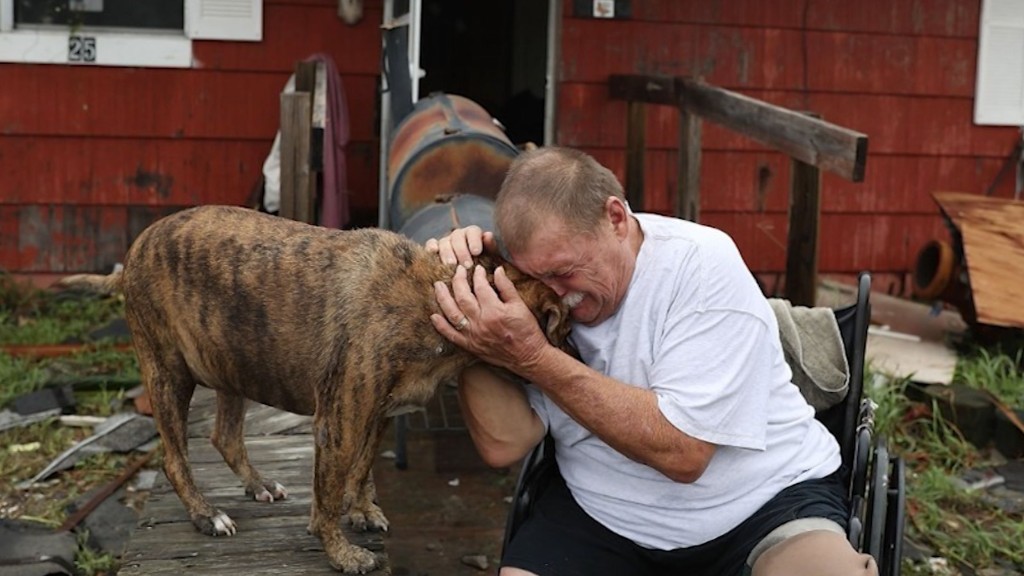
The flooding in the Houston area caused by Hurricane Harvey is just the latest problem for the already troubled National Flood Insurance Program.
The federally-funded program, which is part of FEMA, is the only protection against flooding that most homeowners and businesses can hope to get, since private policies typically only cover the wind damage that's associated with hurricanes, but not flood damage.
But after a series of major storms caused floods in the last 12 years, including Hurricane Katrina in 2005 and Superstorm Sandy in 2012, the program is roughly $25 billion in debt. It has less than $2 billion in cash on hand, with only $6 billion more left in borrowing capacity as it prepares for the claims that will be filed due to Harvey.
Most homes in the affected area don't have flood insurance, but about 400,000 homes in the counties affected by Harvey do have policies. The average claim in the last 12 years has been for about $50,000, which means this storm could quickly deplete the fund's remaining resources.
And the financial strain is only going to get worse, experts say, thanks to a combination of climate change and more sprawling development, which can make flooding worse, since asphalt can't absorb rain the way undeveloped land can.
"More development coupled with rising sea levels is [putting] more people being at risk, more assets at risk and [leading to] more expensive claims," said Laura Lightbody, director of the Pew Charitable Trusts' project to reduce the impact of weather-related catastrophes.
Related: How to avoid 'storm chaser' fraud after Harvey
To make matters worse, the program must be reauthorized by Congress before Oct 1., or else it won't be able to issue any new policies. While existing policies would remain in effect, the lack of available flood insurance could stall the sale of homes inside designated flood zones, where lenders typically require flood policies.
"There was always an intent to reauthorize the program," said Chris Gillott, legislative director for Sen. Bill Cassidy, the Louisiana Republican who introduced a bipartisan reauthorization bill in April. "This storm drives home the need to do that. The only question is whether it is a short or long term solution."
Until 2005 the premiums collected under the program pretty much covered the cost of claims paid. But record payments of $17.8 billion in 2005 put in a hole it has yet to emerge from.
Related: Lawyers urge Texas homeowners to file Harvey claim before law change
Right now the insurance program is borrowing from the U.S. Treasury to cover its costs, which means that ultimately, taxpayers could be on the hook. Congress has tried to reform the program. It passed a bill in 2012 that would have raised premiums, but after an outcry from many of the 5 million policyholders, Congress changed the program again in 2014 to cap the increases policyholders would have to pay.
Those caps would stay in place under Cassidy's bill. Critics say it's wrong that the program is being subsidized, and that anyone who chooses to live along the coast or in other flood prone areas should have to bear the full cost of that choice. If policyholders pay premiums that don't properly reflect their flooding risk, Lightbody said, that creates a "perverse incentive" that may encourage more people to live in areas at high risk of flooding.
The downside to a huge premium hike is that it would discourage homeowners from maintaining their policies, which could lead to more uninsured losses and greater economic damage.
The reforms under consideration include spending more premium money on measures to prevent future flooding, and buying and tearing down some of the homes that file for a disproportionate number of claims due to repeated flood damage. Lightbody says that less than 1% of the policyholders receive 25-30% of the claims filed because they file repeatedly.
Of course, none of these measures will solve the problems associated with more frequent, and costly, floods. "There is not one moonshot solution to reducing flood risk," she said.


